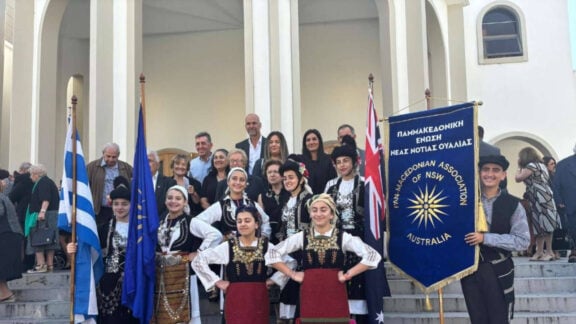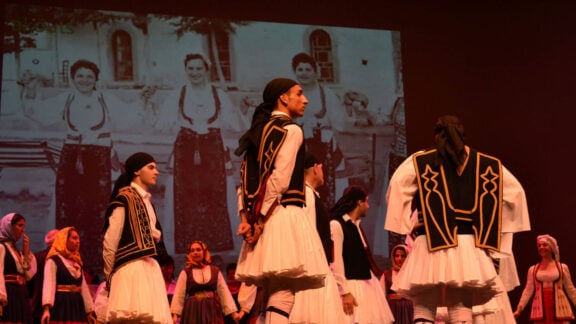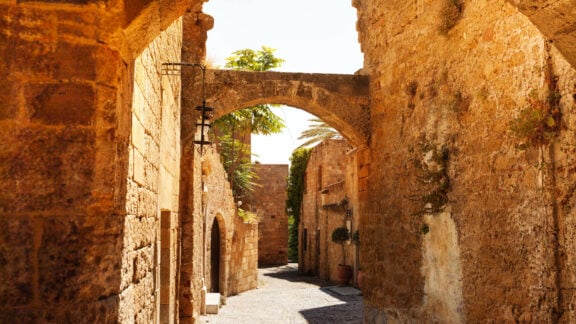So you think that a bougatsa is a pastry that wraps up a yummy custard and then is sprinkled with cinnamon and icing sugar? Think again. A bougatsa is a lot more then that and only in Northern Greece do they know what its about, the rest of Greece it is just a custard wrapped up in pastry.
But lets take it form the beginning, as I tend to think ahead of myself.
The birth of the idea of bougatsa began from the geographic area of Byzantium, specifically from Constantinople (Istanbul) prior to 1453 when it was still Greek (we will argue the Roman Empire another time) before the Ottomans arrived.
It is well documented that in Byzantium baked sweets (του ταπσιού) and pites (pies) had a longstanding tradition and one of these traditional pites was the bougatsa.
Even after the Ottomans, the bougatsa continued to distinguish itself. This came as no surprise as we know that as the Romans adopted Greek food, the Ottomans adopted the food of Byzantium (what is Turkish and Greek is again a subject for another article). It is mentioned in the writings of the 16th and 17th century Ottoman traveller Evliya Celebi who says that in Constantinople two bake houses make the bougatsa kourou (kourou is a type of pastry widely used to this day in Greece and available in supermarkets), kigmali (with mince meat), peinirli (with cheese) and “sante bougatsa” (finished with icing sugar), the Turkish wording.
The people of The City (η Πόλη) as it continues to be called to this day by Greeks, gave the name bougatsa (μπουγάτσα η μπουγκάτσα) meaning that it was a savoury or sweet pita, wrapped well and watertight within the pastry”. This is the basic difference that the bougatsa has with other pites. The other main difference is the pastry is not rolled out on flour with a rolling pin, but is spread out piece-by-piece by hand with oil and butter.
Bougatsa spread in Greece from the refugees that came from Constantinople and also from the geographical area of Eastern Thrace with the exchange of populations.
A big majority of the Greek refugees settled in Thrace, central and eastern Macedonia, western Macedonia, Thessaly, and many spread out all over Greece.
In the early years, after 1922 up till 1940 and after 1945 when the war was over and the state was just beginning to organise itself, it was difficult for people (especially refugees) to begin their own businesses and set up workshops making bougatsa. Even though the environment was so difficult there was a man from Serres, Konstantinos Kariofillis who began selling bougatsa as street food, and went on to open the first shop (μπουγατσάδικο) selling bougatsa and named it “Anotero” (“The Best”) in 1950. Ex-Polites (from Constantinople) opened shops in Serres, George Flocas in 1955 who went into partnership with another ex-Polite again in Serres, and there were others all from Serres. So we can safely say that Serres in Greece was the “birthplace” of the bougatsa, the concept being bought over by the Greek refugees.
It was much later that they left Serres to start bougatsa businesses in other larger towns in northern Greece and only in the early 1970s did the bougatsa culinary culture spread to the rest of Greece via the people who had learned their trade from these refugees.
In Serres today there are 57 workshops making bougatsa and 88 shops selling bougatsa in a small city with a population of 200,000. If you travel around Greece many bougatsa shops and bakeries are named after Serres.
During the formative years of the bougatsa in mainland Greece it was risky for a man to go and eat at one of these shops as tongues would start wagging that the women of the house could not make bougatsa, or just as bad; it was not made well. During these times there always had to be some sort of pita in the household otherwise it was an embarrassment for the household and especially for the woman of the house.
As the years have rolled on all this has changed as society changes. Women work outside their homes, they are better educated and until very recently Greeks had one of the highest standards of living in the world.
These days pita and bougatsa can be bought everywhere without any stigma, people just know where to go and get the best bougatsa.
A bougatsa in Northern Greece is not just the cream filled version. When you walk into a bougatsa shop and you are not from that part of the world you are taken aback as they look at you waiting for more information and if you are still standing there with a blank look on your face you will asked with what filling, meat, cheese, pumpkin, custard and any other filling that’s on the menu. From Athens downwards a bougatsa is just the custard filled version.
The sweet version of bougatsa is often eaten for breakfast or after a heavy night of revelling and a little too much drinking and the parea (the friends group) will go to the bakery at about 5:00 am and wait in a long queue for the bougatsa just out of the oven smelling like a baker’s paradise, that will settle the funny feeling after a heavy night.
It is always served hot and cut up into small pieces and if it’s the custard or the cheese version it will be sprinkled with icing sugar and cinnamon.
I’m sure there are memories we all have, those of us who have spent time in Greece, of a beautiful dawn with friends, in the summer on a Greek Island eating bougasta.
Advertisement








